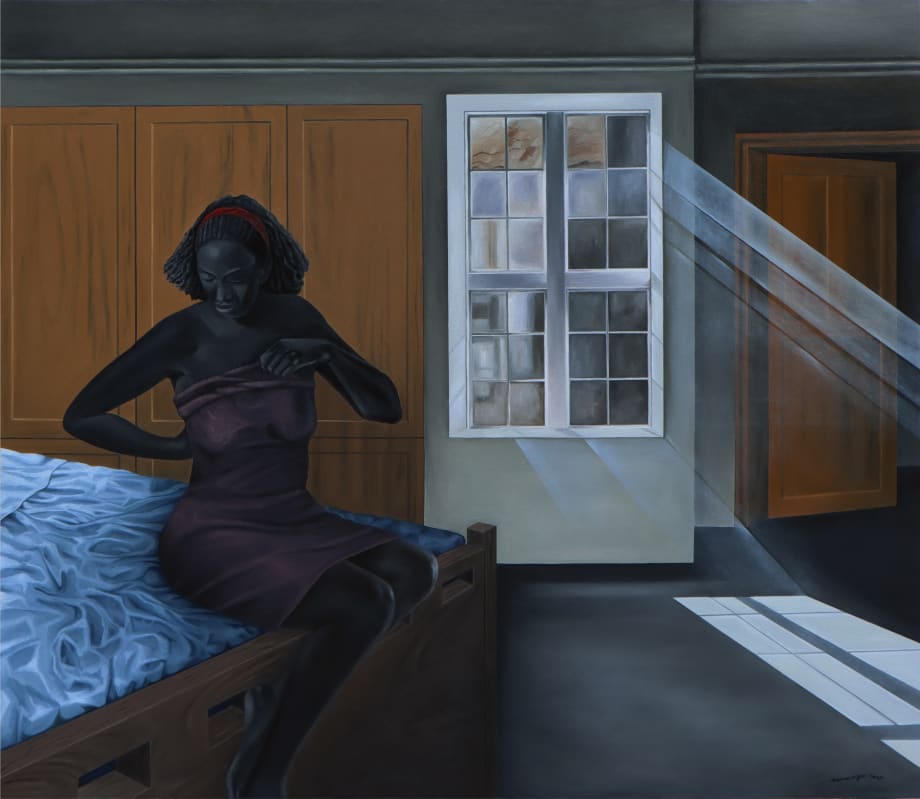Ian Mwesiga and the Imagining of his Complex Painterly Worlds
Ian discusses the importance of self-questioning and how this aids progression with one's work.
2020 proved to be a productive year for the Kampala-based artist Ian Mwesiga. Granted more time than usual in the studio, the artist – known for his magnificently smooth, flat painted portraits – has progressed quickly yet fluidly in the last year or so, working through a myriad of ideas on the canvas in the comfortable confines of his studio. Since graduating in Industrial Fine Art and Design from Makerere University in 2014, the painter has produced several works, imbued with a warm sense of community and complimentarily framed by geometrically stark backdrops.
Long before he distinguished this style however, he first envisioned a surrounding creative world while at church. “I was drawn to picking what I saw there from a very early age,” he tells us, perhaps explaining the discernible architectural emphasis throughout his portfolio. “I was fascinated with the process of transforming the second dimension to the third.” In this sense, Ian is interested in how people interact with the spaces they occupy and how this, in turn, informs one’s existence.
Over time, Ian honed his painterly craft. A practice that’s collided with a parallel academic career and a distinct examination of who he wants his art to speak to. When he first graduated, he underwent an intense period of experimentation which in due course, led to the figurative style tinted with realism that we can see today. He would blindfold his face and start doing portraits, entrusting the outcome to a sense of touch rather than sight. Ian remarks: “It was really about taking an insular look into oneself and asking questions: why am I doing this, why is it important and who is it important for?”
To this date, he continues to ask himself questions about his work; an essential aspect of self reflection and consequently, progression. He likens this exercise in questioning to a metamorphosis, “a phase that will lead you to eventually discover exactly what you want to do.” When it comes to the subject of his extensively detailed paintings, it is not questioning but intuition that comes to the fore. He conceives the finished image in his head before starting it. Without planning or sketching, he already knows which colours will bleed into one another, which facial expressions will take hold of the subjects and the overall atmosphere the final piece will evoke.

